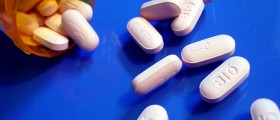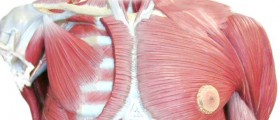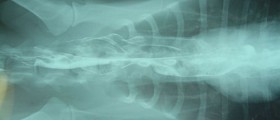
Rhabdomyolysis is a serious medical condition characterized by breakdown of muscle fibers of skeletal muscles. This leads to a release of a specific protein found in muscle fibers (myoglobin). If there is optimal amount of myoglobin, there is no need for worry but excess of this protein can cause serious damage to certain organs, particularly the kidneys.
Rhabdomyolysis is generally a consequence of different traumatic injuries. Crush injuries as well as burns are most commonly associated with damage to skeletal muscles and uncontrollable release of myoglobin. The condition may also affect bed-ridden patients and is possible in some genetic disorders. Rhabdomyolysis also affects patients suffering from hypokalemia, seizures and it can be a side effect of certain medications or develop due to overdose of cocaine and heroin.
What are Symptoms of Rhabdomyolysis?
The leading symptoms of rhabdomyolysis are severe muscle pain and noticeable weakness of the affected muscles.
These symptoms may occur in athletes, especially after excessive physical exertion. In such case rhabdomyolysis is classified as exertional rhabdomyolysis and most commonly affects participants of a long distance marathon. In such people there is noticeable swelling, tenderness as well as stiffness of the injured area.
Similar symptoms may affect patients on prolonged therapy with statins (drugs used for reduction of cholesterol in the blood). The risk of rhabdomyolysis in such patients is even more increased if the person also takes other drugs such as Cyclosporine.
One more characteristic of rhabdomyolysis is darkening of urine. This is a consequence of too much myoglobin in urine. If left untreated, rhabdomyolysis may cause serious damage to the kidneys and even lead to kidney failure. Introduction to these complications is generally accompanied by swelling of hands and feet.
Treatment for RhabdomyolysisIn order to diagnose the condition the doctor takes into consideration patient's medical history, performs physical examination and several more test and exams such as blood and urine analysis (which also includes measuring of myoglobin in urine).
Treatment must be aggressive and prevent all potential complications associated with excess of myoglobin. Urine output can be increased with diuretics. This allows proper excretion of waste products from the body. Together with diuretics patients are supposed to be well hydrated which is achieved with intravenous fluids. Unbearable muscle pain caused by muscle damage is brought under control with narcotics (the pain is excruciating and simply cannot be controlled with other pain killers). And finally, it is important to eliminate all factors that have led to rhabdomyolysis in the first place. Namely, patients who are taking statins are supposed to stop taking the specific drug immediately and athletes must rest the injured muscles and reduce the intensity of training.
















Your thoughts on this
Loading...